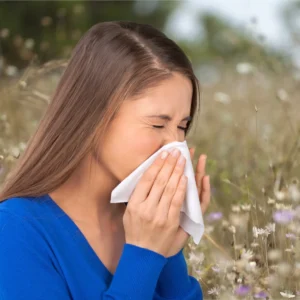Difference Between Life-Threatening Allergies and Seasonal Allergies
Causes, Symptoms, Treatment, Side Effects and Differences Between Seasonal Allergies and Life-Threatening Allergies
Life-Threatening Allergies and Seasonal Allergies Overview
Allergies are a common occurrence, affecting millions of individuals worldwide. However, not all allergies are created equal. Two distinct types of allergies are often discussed: life-threatening allergies and seasonal allergies. While both can cause discomfort and inconvenience, it is important to understand the key differences between them. In this article, we will explore the characteristics, symptoms, triggers, and management strategies for each type of allergy, shedding light on their unique aspects.
Life-Threatening Allergies

Life-threatening allergies, also known as anaphylaxis, are severe and potentially fatal allergic reactions. These reactions occur when the immune system overreacts to a specific allergen, triggering a rapid and systemic response. Common allergens that can elicit life-threatening allergic reactions include certain foods (such as peanuts, tree nuts, shellfish, and eggs), medications (such as penicillin), insect stings (from bees, wasps, or fire ants), and latex.
Symptoms of anaphylaxis can be swift and severe, involving difficulty breathing, swelling of the throat and tongue, rapid heartbeat, drop in blood pressure, dizziness, and loss of consciousness. Without immediate medical attention, anaphylaxis can be life-threatening.
To manage life-threatening allergies, individuals are often prescribed epinephrine auto-injectors, such as EpiPen. It is crucial for individuals at risk to carry their auto-injector at all times, along with wearing medical alert bracelets or necklaces to alert others about their condition. Avoidance of known allergens is the best preventive measure, and individuals with life-threatening allergies should be educated about recognizing the signs of anaphylaxis and seeking immediate medical help.
Seasonal Allergies

Seasonal allergies, also referred to as hay fever or allergic rhinitis, are a common allergic condition triggered by environmental allergens, mainly during specific seasons. The most prevalent seasonal allergens include pollen from trees, grasses, and weeds. When these allergens enter the body through the respiratory system, the immune system reacts, leading to symptoms such as sneezing, itching, runny or congested nose, watery eyes, and coughing.
Unlike life-threatening allergies, seasonal allergies are not typically life-threatening or immediately dangerous. However, they can significantly impact an individual’s quality of life, causing discomfort and interfering with daily activities. Seasonal allergies can be managed through various means, including over-the-counter antihistamines, nasal sprays, eye drops, and allergen avoidance measures.
It is essential for individuals with seasonal allergies to stay informed about local pollen forecasts and take preventive measures during high pollen seasons. These measures may include staying indoors when pollen counts are high, keeping windows closed, using air purifiers, and wearing sunglasses to protect the eyes.
Conclusion
While allergies are widespread, understanding the distinction between life-threatening allergies and seasonal allergies is crucial for proper identification, management, and prevention. Life-threatening allergies, such as anaphylaxis, pose an immediate and serious threat to health, requiring immediate medical intervention and avoidance of specific allergens. On the other hand, seasonal allergies, or allergic rhinitis, are less severe but can still cause significant discomfort and interfere with daily life. By recognizing the symptoms, triggers, and appropriate management strategies for each type of allergy, individuals can take proactive steps to protect themselves and lead healthier lives.
Remember, if you suspect you have allergies or experience severe allergic reactions, consult with a medical professional for accurate diagnosis and personalized treatment recommendations.
Sources
- Mayo Clinic Staff (2021). “Anaphylaxis”. Mayo Clinic.
https://www.mayoclinic.org/diseases-conditions/anaphylaxis/symptoms-causes/syc-20351468 - Nayana Amberdekar (2021). “Life-Threatening Allergy Triggers“. WebMD
https://www.webmd.com/allergies/ss/slideshow-allergy-triggers - Columbia Doctors (2022). “Anaphylaxis/Life-Threatening Allergic Reactions”. Columbia
https://www.columbiadoctors.org/treatments-conditions/anaphylaxis-life-threatening-allergic-reactions
Medically Reviewed By

Alexandria University Hospital
I have reviewed the articles on seasonalallergies.org and I would like to say that I was very surprised.
Over years, I have seen many different articles in the field of allergy, but these articles were very interesting.
These articles were really unique, they could help many people around the world to know more about seasonal allergy, symptoms, prevention and when to seek medical advice.
These articles represent an addition in the field of Health Education not only for people with allergy but also for the whole population.
Looking for more allergy types? Find a full list of other allergy causes here.
Last Updated on July 5, 2023